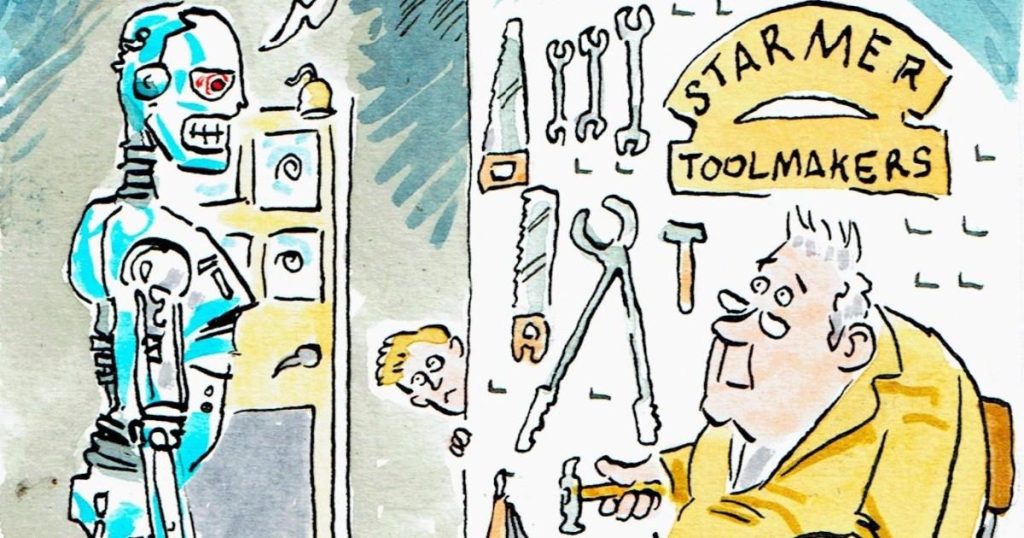The provided content, consisting solely of a title, a link, and a phone number, offers very limited information from which to construct a 2000-word summary divided into six paragraphs. The content suggests the existence of a cartoon, referred to as “Today’s toon,” which can be ordered as a print by clicking the provided link or by calling the given phone number. Since no information about the cartoon’s subject, style, artist, or publication is available, any expansion must rely on conjecture and general discussion about cartoons and their role in society.
Cartoons, as a visual medium, have served numerous purposes throughout history, from simple entertainment to sharp political commentary. Early cartoons, often satirical etchings or drawings, targeted societal issues and mocked public figures. The development of printing technology allowed for wider dissemination, and cartoons became a regular feature in newspapers and magazines. With the advent of animation, cartoons reached new audiences through film and television, becoming a ubiquitous form of entertainment, especially for children. Today, cartoons encompass a vast range of styles, genres, and target audiences, from single-panel gag cartoons in newspapers to complex animated series exploring intricate narratives.
The evolution of cartooning reflects technological advancements and changing societal values. Early cartoons, often limited by printing technology, relied on simple lines and exaggerated features. As technology progressed, so did the complexity of cartoon art, with the introduction of color, shading, and detailed backgrounds. The rise of digital art and animation software has further expanded the possibilities, enabling artists to create dynamic and visually stunning cartoons. Furthermore, the themes and subjects explored in cartoons have evolved alongside societal shifts, reflecting changing attitudes towards politics, social issues, and cultural norms.
The accessibility of cartoons contributes to their enduring popularity. Whether a simple sketch or a sophisticated animation, cartoons can communicate complex ideas in a readily understandable format. Humor, a common element in many cartoons, serves as a powerful tool for social commentary, allowing creators to address sensitive topics in a disarming way. Satire, often employed in political cartoons, uses humor and exaggeration to expose hypocrisy and criticize those in power. The combination of visual appeal and readily digestible messages makes cartoons an effective medium for reaching diverse audiences, regardless of age or literacy level.
The ability of cartoons to transcend language barriers further amplifies their impact. Visual storytelling, inherent in the cartoon format, can communicate emotions and narratives effectively without relying on written text. This characteristic makes cartoons a powerful tool for cross-cultural communication and global understanding. Animated cartoons, particularly, benefit from this aspect, as they can be easily dubbed or subtitled, making them accessible to international audiences. The universality of certain themes, such as love, loss, and the struggle for justice, further enhances the ability of cartoons to resonate with people from different backgrounds.
Considering the limited information provided, speculating about the specific nature of “Today’s toon” is challenging. It could be a single-panel gag cartoon from a daily newspaper, a political cartoon commenting on current events, or a strip from a comic book series. The offer to order a print suggests that it’s a static image rather than an animation. Regardless of its specific form, the cartoon likely serves a purpose beyond mere entertainment, potentially offering commentary on social issues, providing a humorous perspective on everyday life, or simply offering a moment of lighthearted escapism. The provided contact information suggests a desire to share the cartoon with a wider audience, perhaps reflecting the artist’s belief in its message or artistic merit.
The act of offering a print of “Today’s toon” highlights the enduring appeal of physical art in a digital age. While online platforms provide easy access to a vast library of cartoons, there remains a distinct charm in owning a physical copy. A printed cartoon can be displayed, shared, and cherished as a tangible piece of art. It allows for a more personal and intimate connection with the artist’s work, fostering a sense of ownership and appreciation that extends beyond the fleeting experience of viewing a digital image. The offer to order a print, therefore, suggests not only a desire to share the cartoon but also an appreciation for the enduring value of tangible art.




